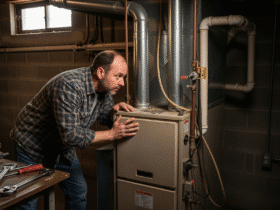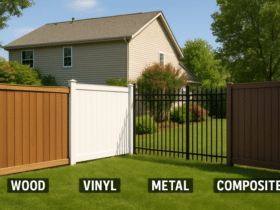Key Takeaways
- Home electrical safety protocols dramatically lower the risks of fire and shock.
- Many common mistakes with electricity can be avoided with some planning and basic knowledge.
- Understanding when to consult a professional electrician ensures household safety and compliance with regulations.
- Maintenance and preventive measures extend the lifespan and efficiency of home electrical systems.
- Valuable, up-to-date resources are readily available to help homeowners stay informed about best practices.
Table of Contents
- Why Safe Electrical Practices Matter
- Common Homeowner Mistakes With Electricity
- Injuries and Statistics: The Risks of DIY Electrical Work
- Essential Safe Electrical Practices for Every Home
- When Should You Call a Licensed Electrician?
- Preventive Inspections and Energy Efficiency
- Resources for Learning Safe Practices
- Final Takeaway: Make Safety a Habit
Why Safe Electrical Practices Matter
In modern households, electrical systems are embedded into nearly every wall and under every floor, quietly keeping homes running while rarely drawing much attention—until something goes wrong. Electrical problems, even seemingly minor ones, should never be ignored. Faulty outlets, outdated wiring, and overloaded systems can swiftly evolve from an inconvenience into a devastating fire or catastrophic injury. According to the U.S. Fire Administration, electrical malfunctions account for tens of thousands of house fires annually, causing loss of life and substantial property damage.
Despite the growing popularity of DIY projects, electrical work stands out for its potential hazards. Responsible homeowners know that specific jobs require more than watching an online tutorial or borrowing a neighbor’s voltage tester. Relying on the expertise of professionals, such as Boulder electricians for reliable service is a wise choice when safety is non-negotiable. Learning to approach home electrical projects with curiosity, preparation, and caution can turn a risky situation into a managed and secure upgrade. Knowing when to call a certified expert can prevent costly mistakes and ensure code compliance. Investing in professional help protects your home and gives you peace of mind that the job was done right.
Common Homeowner Mistakes With Electricity
Even seasoned DIY enthusiasts make mistakes with home electricity. Confidence can often cloud judgment, and taking shortcuts may seem tempting when time is short. One of the most common missteps is forgetting to switch off the power at the breaker box before working. Simply toggling the wall switch is never enough—live wires still pose a shock risk. Other frequent errors include failing to check wire grounding, mismatching wire gauges, or carelessly leaving exposed wires where curious hands or paws can find them.
Using extension cords to replace proper wiring is another widespread habit, often leading to overloaded circuits and tripped breakers. Overcrowding power strips, daisy-chaining adapters, or hiding cords beneath rugs are all practices that quietly raise fire risk. Even changing outlets or light switches can introduce hazards if connections are left loose or the wrong type of device is installed. A simple wiring diagram from a manufacturer can differ from the unique quirks of a specific house—no two homes are wired the same way, and what works next door may spell trouble in your own space.
Injuries and Statistics: The Risks of DIY Electrical Work
Statistics highlight why it’s better to err on the side of caution. Shocks, burns, and falls from ladders during electrical repairs send thousands of Americans to emergency rooms yearly. The National Fire Protection Association reports that electrical failures or malfunctions are the second leading cause of home fire deaths each year. Civilian injuries and fire-related property losses from electrical issues run into the hundreds of millions annually.
Real-life accounts often echo these findings. Homeowners face tragedy daily after overestimating their skills or underestimating what’s hidden behind the drywall. Burned outlets from overloaded circuits, singed baseboards from loose connections, and attic fires started by rodents chewing wires are all too common. Several news stories each year recount homes destroyed or lives lost to electrical projects that would have ended far differently if handled by licensed experts.
Essential Safe Electrical Practices for Every Home
Prevention beats damage control every time. Homeowners can build powerful habits around a few essential safety practices, regardless of skill level. Always begin by locating and switching off the correct circuit breaker; invest in a non-contact voltage tester for added peace of mind. Before touching any wires, snap a quick photo or use colored stickers to label connections, making reassembly foolproof. Wiring should never be approached carelessly, even for minor upgrades—double-check compatibility and ensure all connections are tight.
GFCI (Ground Fault Circuit Interrupter) outlets belong near any water source—kitchens, bathrooms, laundry rooms, and outdoor plugs. Periodic inspection of every plug, cord, and breaker box prevents gradual deterioration from becoming an unexpected hazard. Steer clear of the temptation to tuck wires under rugs or furniture, since the friction can wear away insulation and expose live wires.
The Consumer Product Safety Commission offers comprehensive digital safety guides and printable checklists for those eager to follow best practices. Integrating even a handful of these recommendations into household routines dramatically lowers the odds of an emergency.
When Should You Call a Licensed Electrician?
Even the most capable and enthusiastic homeowners must recognize their limits, especially regarding electrical repairs and upgrades. While replacing a light fixture or installing a dimmer switch might be safe DIY tasks, other projects demand specialized training, proper tools, and a deep understanding of electrical codes. For example, replacing an electrical service panel, installing a dedicated outlet for high-powered appliances, or running new wiring to additions, garages, or outdoor buildings should always be handled by a licensed electrician. These tasks involve complex load calculations, grounding requirements, and inspection protocols that go far beyond the scope of online tutorials.
Warning signs like flickering lights, warm outlets, or persistent circuit breaker trips often signal underlying issues that require professional intervention. Electrical work during major renovations—especially kitchens or bathrooms—nearly always requires permits and code-compliant designs. Ignoring regulations or misjudging the difficulty can lead to dangerous outcomes, including electrical fires. When a project starts to feel over your head, trust your instincts. Seeking professional help can offer peace of mind, protect your investment, and most importantly, safeguard your family from serious hazards.
Preventive Inspections and Energy Efficiency
Think of electrical inspections as the equivalent of an annual health check-up—essential for diagnosing hidden dangers and revealing clever ways to save energy and money. Just like aging bodies require more attention, homes, particularly those built before the 1980s, are likely to contain outdated or degraded wiring, loose connections, or ungrounded outlets that pose serious risks if left unchecked. Regular inspections every five to ten years—or more frequently for older homes—help prevent these problems from escalating into costly repairs or safety hazards.
Licensed electricians bring trained eyes and specialized tools to detect issues homeowners might never notice, such as deteriorating wire insulation, overloaded circuits, or hidden junction boxes that no longer meet code. But inspections aren’t only about identifying hazards. They also offer an opportunity to modernize. Replacing old outlets with smart versions, switching to LED lighting, or upgrading to energy-efficient appliances can lead to significant savings over time. These improvements not only reduce utility costs but also enhance comfort and convenience. Ultimately, proactive electrical inspections safeguard your home, extend its longevity, and ensure your electrical system supports modern living demands efficiently and safely.
Resources for Learning Safe Practices
Access to reliable educational content is vital in enhancing home safety, particularly when understanding and preventing electrical hazards. National initiatives—especially those promoted during observances like Home Electrical Safety Awareness Month—spotlight often-overlooked risks tied to changing seasons, aging infrastructure, or the integration of smart home technologies. These campaigns frequently provide free, easy-to-understand resources, such as interactive learning modules, printable checklists, downloadable posters, and step-by-step videos that cater to all age groups and learning styles.
Beyond digital content, local workshops and community-led classes offer invaluable, hands-on opportunities to learn practical skills under the guidance of trained professionals. These programs demystify electrical systems and encourage neighbors to share best practices, fostering a culture of safety and awareness. Encouraging full household participation in safety drills, posting emergency contacts near breaker panels, and reviewing safety routines regularly ensures that everyone is prepared in an emergency. Whether recognizing the smell of burning wires or knowing how to use a fire extinguisher, education empowers individuals and families alike. Ultimately, knowledge remains the strongest line of defense against preventable accidents.
Final Takeaway: Make Safety a Habit
Creating a safe electrical environment at home goes far beyond a single inspection or project—it’s a continuous commitment rooted in awareness and proactive care. Electrical safety begins with developing consistent habits: always shutting off power at the breaker box before replacing fixtures, checking cords and outlets for signs of fraying or heat, and never overloading sockets with high-demand appliances. These small, routine actions can prevent larger, potentially dangerous issues from developing unnoticed.
It’s also essential to remain curious and informed. Knowing what warning signs to look for—such as flickering lights, burning smells, or frequently tripped breakers—can significantly prevent accidents. However, homeowners should also recognize that DIY fixes have limits. Calling a certified electrician for tasks beyond your skill level, such as wiring updates or service panel upgrades, ensures code compliance and family safety.
Ultimately, maintaining electrical safety is a form of stewardship. By combining diligence with the willingness to seek expert input, you create a home environment that is functional, secure, and reassuring for everyone who lives there.








